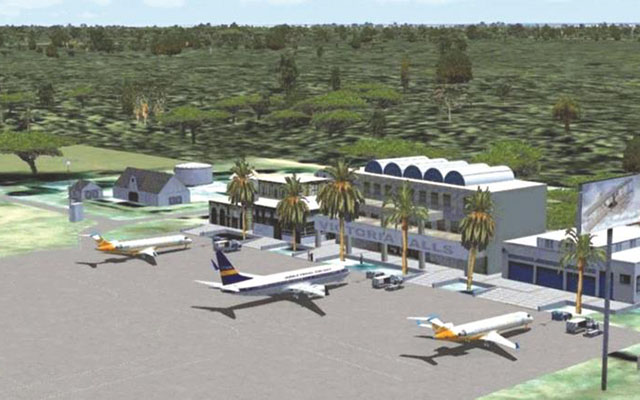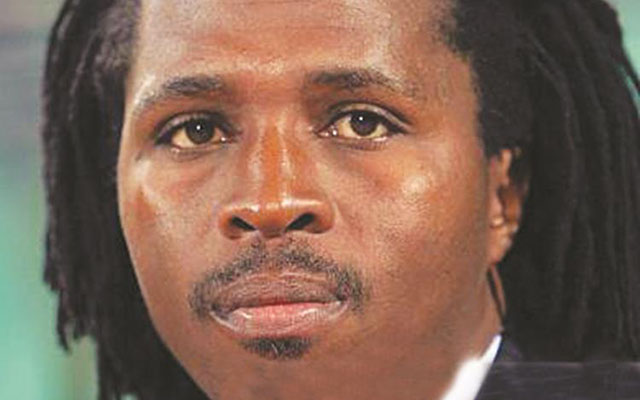What is China’s game in Africa?


The hallmark of Chinese presence in Africa is the massive construction and infrastructure project sweeping right across the continent — from new, state-of-the-art ports, such as the newly-refurbished Victoria Falls International Airport to desperately needed railway and metro systems, modern highways and to all-inclusive housing projects, etc, all at relatively cut-price costs
Anver Versi Correspondent
THE question posed in the headline, “What is China’s Game in Africa?” has been exercising analytical minds inside and outside Africa for a considerable time and although a whole slew of theories have been put forward, many of them have been proven to be flawed by the actual reality.
So we can only conclude that we are still nowhere near to solving the great “Chinese puzzle”, if in fact it does exist. Perhaps many of us, including think-tanks influenced by the West, which by and large view the Chinese presence in Africa with undisguised suspicion, have been approaching the issue from the wrong perspective.
Over the past five decades since the end of WW2, we have become used to looking at the world in terms of the strategies of superpowers in their attempts to establish hegemonies over various parts of the globe. They have set about consolidating their “spheres of interest” using both hard power – military force, economic sanctions and regime changes – as well as soft power: diplomacy, aid and cultural exports such as films, music, literature, art and value systems.
Africa, as indeed most of the developing world, has had little choice but to try and navigate through these often dangerous shoals, taking whatever profit and gain that is available and steering clear of destructive confrontations as nations pursue their development agendas.
The previous five decades have therefore been a fascinating series of measure and counter-measure as all the players, major and minor, engage in the modern version of “The Great Game”, winning some hands and losing others. While the rules of the game of dominance remain the same, strategies often have to be redrawn in the light of seismic events – such as the collapse of the Soviet Union.
Then, seemingly suddenly and coming from an unexpected quarter, entered the Dragon. In the case of Africa, the Chinese influx, unlike previous foreign incursions, was not led by gunboats or a heavy ideological battering ram. Instead they politely knocked on the door and when leave to enter was given, they came in with smiles, firm handshakes and an overflowing cornucopia of goods and the means – financial as well as technical – to provide Africa with what it needed most, a stream of infrastructure.
It was an offer that no one sensible could refuse. And the Chinese, unlike others, did not just make pledges, they delivered immediately. To the astonishment of many, they did not insist on any conditionalities or seek to change the way countries were governed. “You are independent, do what you have to do. Don’t interfere with our system and we’ll not interfere with yours,” was the message.
But having been brought up in a world of vested interests and covert motives, we, and many others, kept asking – but what is the real game? The West had made it clear that they regarded Africa in terms of their own economic, strategic and ideological interests and supported or opposed governments to the degree that African policies and practice conformed to these sets of expectations.
Surely, therefore, the reasoning went, there had to be a hidden Chinese agenda. But what was it? Were they secretly pushing communism or establishing camouflaged military spearheads? No, they said. “We want resources to build our own economy and you need plenty of cheap goods and lots of infrastructure. We trade – you get what you want, we get what we want.” They termed it a “win-win situation”.
What you see is what you get?
The more inscrutable the Chinese remained, the greater was the speculation about their hidden agenda. Theories abounded – it was a “new form of colonialism” or a “massive resource grab”, or the Chinese even wanted to settle part of their large population in the wide open spaces of Africa, or exploit its cheap labour; and so the ideas went on. But real evidence was thin on the ground. “We want a win-win situation” was the deadpan response.
Perhaps they really do mean what they say. After all, despite the fact that China is now the second-largest economy in the world, it is still a developing country that has moved more of its citizens out of poverty more quickly than any other nation has ever done in history and wants the same not only for Africa, but developing Asia as well.
China itself still remembers what it was like to be a colony of foreign powers and no one can deny that it was a staunch supporter of Africa’s liberation struggle. It knows full well the cost of sticking to its own political system against that prescribed by other powers and this is perhaps why it has decided not to interfere in anybody else’s affairs. “Only he who wears the shoe, know where it pinches”.
In addition, its economic logic is impeccable. Its spectacular rise has been built on making things and trading them. It needs trading partners and you cannot trade with a poor nation. So if you can help other nations to become more, prosperous, you also become more prosperous by trading with them. So you set about making them more prosperous by building their infrastructure and increasing your trade with them.It is an argument that is difficult to fault even in these cynical times. But China remains tight-lipped on many issues and therefore the speculation on what exactly its game in Africa is will continue. Time will tell.
In the meantime, let us take a fresh look at the extent of China’s presence in Africa to help us arrive at a more sober reflection on its motives.
A sweeping presence from coast to coast
For the past decade and a half, from the northernmost tip of Africa to the southernmost, from east to west, the only game in town has been China. From high-end shops in city centres to ramshackle stands deep in rural Africa, the goods on sale are made in China.
The number of Chinese in Africa seems to multiply by the week. Some are almost invisible in their work camps; some pop up in all sorts of places – hawking live chicken in a Zambian market; digging for gold in Ghana or copper in DRC; peddling DVDs of Hollywood, Bollywood and even Nollywood new releases; running huge Chinese-style restaurants in the heart of Luanda; growing, harvesting and buying massive quantities of tea in Zimbabwe; digging ditches in Nigeria; telling fortunes in Tanzania; and the list goes on and on.
That is one picture of the Chinese in Africa. The other is the massive construction and infrastructure project sweeping right across the continent – from new, state-of-the-art ports, to desperately needed railway and metro systems, to modern highways creating transport ribbons all over the continent, to bridges flung over raging rivers, to massive skyscrapers altering African cityscapes overnight, to humming factories, to gigantic power plants, to essential telecoms and mining infrastructure, to all-inclusive housing projects, etc, etc.
The hallmark of Chinese construction projects has been speed – speed of decision, speed of funding and speed of execution – all at relatively cut-price costs.
This is not even to mention trade. Chinese buyers are gobbling up virtually anything on sale in Africa – minerals, oil, gas, cotton, leather, hemp, tea, coffee (indeed, the Chinese have become some of the most ardent consumers of coffee over the past few years), foodstuffs, all sorts of meat (including crocodile), anything that swims and plenty more besides.
Going in the other direction are hundreds of thousands of containers crammed full of manufactured items – ranging from dirt-cheap toys and textiles to smartphones, computers, television sets, radios, household gadgets, spare parts, medicines, and increasingly, white goods such as cookers, fridges, microwaves, washing machines, dishwashers and a million other useful bits and bobs that occupy shelf space in upmarket shops as well as the teeming informal markets that every African city boasts.
Honest statisticians throw up their hands in helplessness when you ask them to put a dollar value to all of the China-related economic activity. A very great deal, perhaps the bulk of trade at least, goes under the monitoring radar. Based on accessible accounts, institutions work out what is at best a ball-park figure of say $100 billion per annum, but they will privately tell you that this may be a gross underestimate.
New research by McKinsey suggests that the Chinese presence may be much larger than we have been led to believe.
“Look, frankly, no one, not even the Chinese authorities, knows the exact figure you can put on China-Africa trade and investment,” a friend who works as a number cruncher at the World Bank told me. “Whatever it is, it is colossal. Totally a game-changer as far as Africa is concerned.”
There are some who insist that the real cause of Africa’s sustained economic growth and the rise of the middle classes, is directly linked to trade with China. “We are not talking just the official figures – oil and mineral exports, etc – but the under-the-surface transactions, almost all in cash, that have brought relative prosperity to the ordinary African. Just think of the whole chain of middlemen needed to handle all this volume of trade, each taking a small cut along the way,” added one of my friend’s World Bank colleagues.
“This explains Africa’s resilience despite the global economic slump and the sharp downturn of commodity prices,” he went on. “Governments have lost out, true, but go visit the markets – business is booming.”
But all this “unquantifiable data” is anathema to dyed-in-the-wool economists and government statisticians, my friends from the Bank confided. “They want things in neat boxes, and if you can’t fit them into boxes, they simply ignore the reality and believe their figures represent the true picture.”
Myth versus reality
The reality, according to McKinsey’s report “Dance of the Lions and Dragons: How are Africa and China engaging, and how will the partnership evolve?”, is that there are there are more than 10 000 Chinese-owned firms operating in Africa today. “Around 90 percent of these firms are privately owned – calling into question the notion of a monolithic, state-coordinated investment drive by ‘China, Inc.” says the report.
“Although state-owned enterprises tend to be bigger, particularly in specific sectors such as energy and infrastructure, the sheer multitude of private Chinese firms working towards their own profit motives makes Chinese investment in Africa a more market-driven phenomenon than is commonly understood,” it adds.
Nearly a third, the report states, are involved in manufacturing, a quarter in services, and around a fifth in trade and in construction and real estate. “In manufacturing, we estimate that 12 percent of Africa’s industrial production – valued at some $500 billion a year in total – is already handled by Chinese firms. In infrastructure, Chinese firms’ dominance is even more pronounced, and they claim nearly 50 percent of Africa’s internationally-contracted construction market.”
The report makes another surprising discovery. “The firms we talked to are profitable; nearly one-third reported 2015 profit margins of more than 20 percent. They are also agile and quick to adapt to new opportunities. Except in a few countries such as Ethiopia, they are primarily focused on serving the needs of Africa’s fast-growing markets rather than on exports.”
What is even more impressive is that the Chinese seem to have smoothed out the earlier cultural clashes which often brought their personnel into violent conflict with African workers, and as the research shows, their production methods are now designed to pass on skills to their African workers.
So what can we conclude about China in Africa? Is the Dragon a devouring beast or the benevolent creature of Chinese mythology? Time will reveal all but perhaps in the meantime, we should give them the benefit of the doubt.
- Anver Versi is the award-winning former editor of African Business Magazine. He was born in Kenya and is currently based in Accra, Ghana. This article is reproduced from New African magazine.









Comments